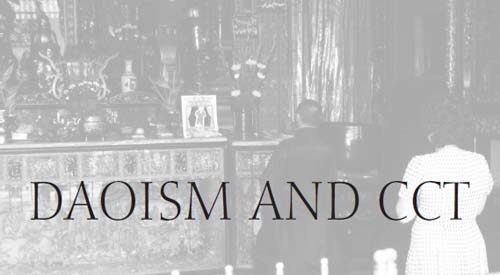Daoism and CctHistory and Sources |
What is religious Daoism and what are its origins? |
“Daoism” (or Taoism) refers to a wide range of philosophical, religious, and magical traditions dating from perhaps the fourth century B.C.E. in China. Here the focus will be on the specifically religious aspects of these complex and ancient developments. The most ancient roots of the tradition were in shamanistic cults dating back perhaps several millennia to prehistoric China. Legendary imperial figures of that age, Yu, Shun, and Yao, are still revered as great sages. According to legend, Daoism formally began with Lao Zi’s writing of the Dao De Jing, the Classic of the Way and Its Power, in the sixth century B.C.E. Scholars now believe the Dao De Jing actually dates from between 300 and 250 B.C.E. Teachings of the Dao De Jing came together with those of thinkers like Yang Zhu (340-266 B.C.E.) and Zhuang Zi (369-286 B.C.E.) to form the broad conceptual basis of a wider “Daoist” tradition that had become largely philosophical (Dao Jia) by the fourth century B.C.E. But religious Daoism (Dao Jiao) was still a long way off.
Solid scholarly research suggests that Daoism as a religious tradition began in the mid-second century C.E. It seems a teacher named Zhang Dao Ling (34-156 C.E.) claimed that Lao Zi himself commissioned him to spread the teaching of the Dao. Zhang inaugurated the “Five Bushels of Rice” movement (a reference to the suggested offering for would-be members) and built a religious polity in Szechuan province. According to legend, Zhang Dao Ling’s emphasis on acquiring immortality culminated in his ascension into the heavens. Out of that movement grew the first and one of the most influential branches of religious Daoism, the Celestial Masters school. Religious Daoism has since developed numerous sects and schools, each with its distinctive emphasis on various spiritual teachings and ritual practices.

